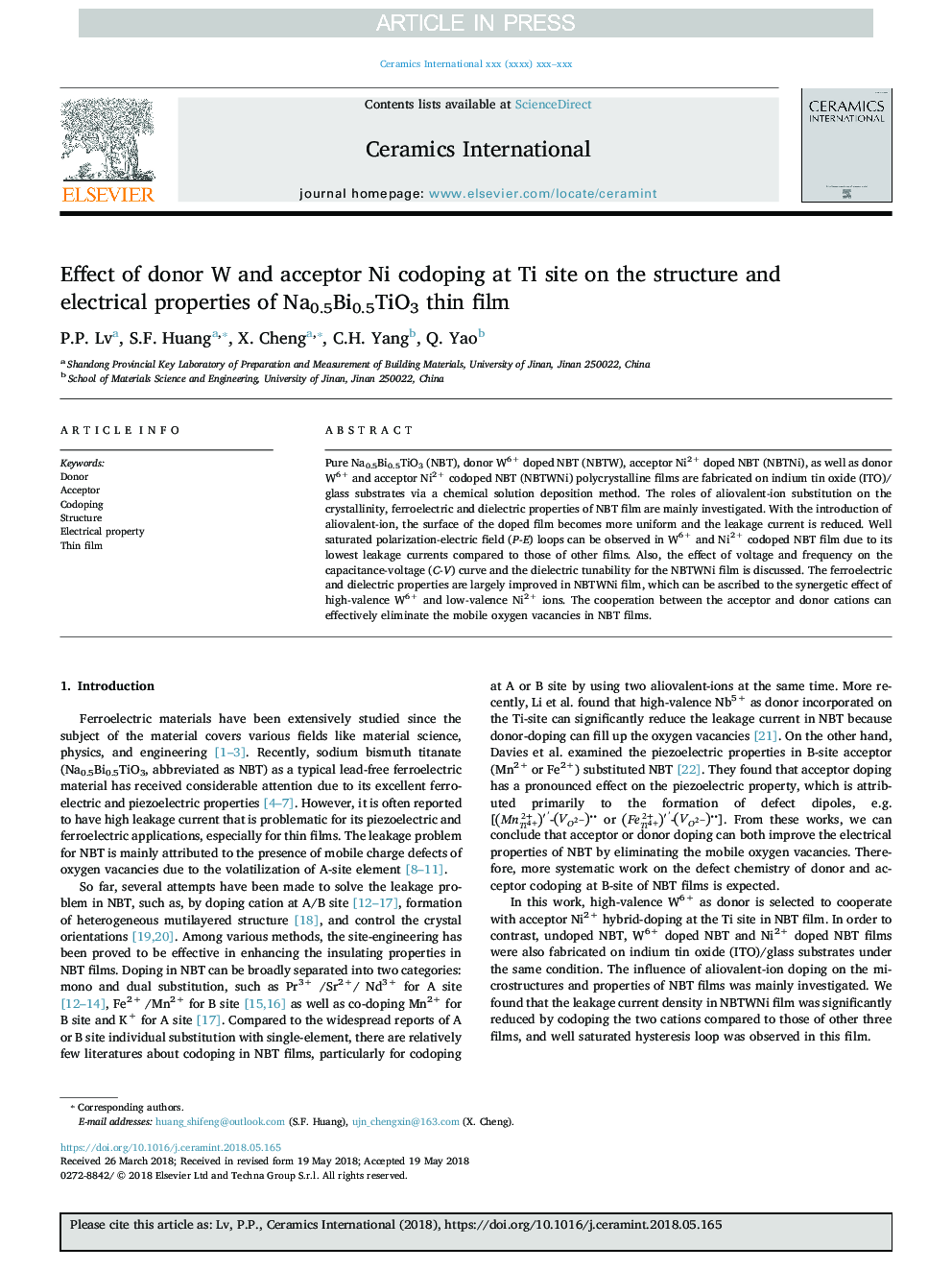| Article ID | Journal | Published Year | Pages | File Type |
|---|---|---|---|---|
| 7886153 | Ceramics International | 2018 | 7 Pages |
Abstract
Pure Na0.5Bi0.5TiO3 (NBT), donor W6+ doped NBT (NBTW), acceptor Ni2+ doped NBT (NBTNi), as well as donor W6+ and acceptor Ni2+ codoped NBT (NBTWNi) polycrystalline films are fabricated on indium tin oxide (ITO)/glass substrates via a chemical solution deposition method. The roles of aliovalent-ion substitution on the crystallinity, ferroelectric and dielectric properties of NBT film are mainly investigated. With the introduction of aliovalent-ion, the surface of the doped film becomes more uniform and the leakage current is reduced. Well saturated polarization-electric field (P-E) loops can be observed in W6+ and Ni2+ codoped NBT film due to its lowest leakage currents compared to those of other films. Also, the effect of voltage and frequency on the capacitance-voltage (C-V) curve and the dielectric tunability for the NBTWNi film is discussed. The ferroelectric and dielectric properties are largely improved in NBTWNi film, which can be ascribed to the synergetic effect of high-valence W6+ and low-valence Ni2+ ions. The cooperation between the acceptor and donor cations can effectively eliminate the mobile oxygen vacancies in NBT films.
Related Topics
Physical Sciences and Engineering
Materials Science
Ceramics and Composites
Authors
P.P. Lv, S.F. Huang, X. Cheng, C.H. Yang, Q. Yao,
